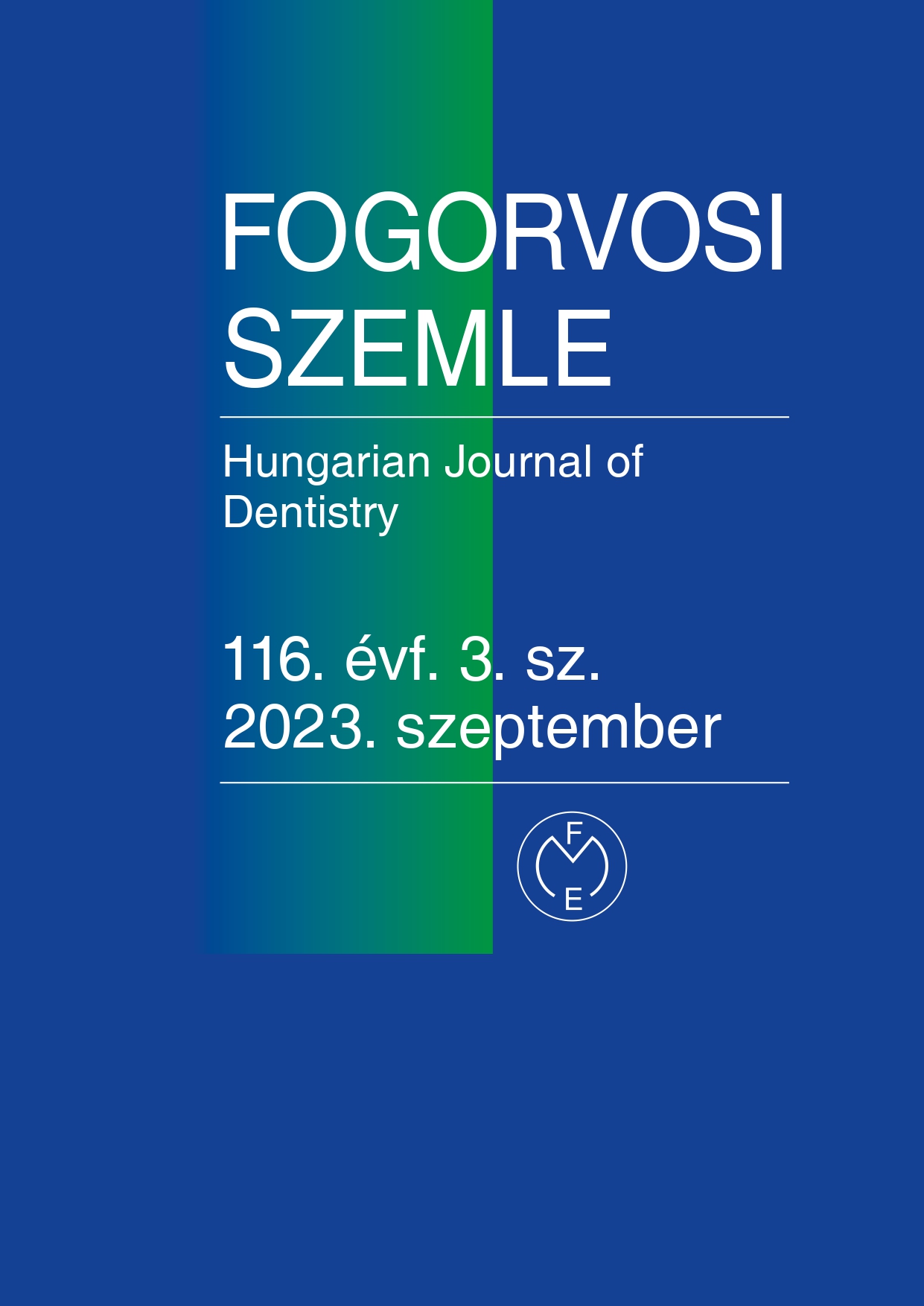Preparation and characterization of 3D printable flexible acrylate-based resin
Abstract
The aim of this study was to prepare an acrylate-based 3D printable resin that showed flexible properties after photopolymerization
and to characterize mechanical-physicochemical properties of polymerized objects. The experimental resin
contained butyl acrylate (BA) and urethane dimethacrylate (UDMA) in 7:3 weight ratio, phenylbis(2,4,6-trimethylbenzoyl)
phosphine oxide (BAPO) in 0.2 %w/w and ethyl 4-(dimethylamino) benzoate in 0.4 %w/w. Tensile strength measurements
were performed by Intron 5544. The curing times were 1, 2 and 5 min. FT-IR spectroscopy was used for the degree
of conversion (DC) measurements on the top and bottom surfaces of specimens. The tensile strength data of resin
increased with polymerization time. Behind this is a higher degree of polymerization, which is also supported by the conversion
data. A trial printing of experimental resin revealed that this matrix can be applied in an SLA 3D printer.
References
BARSZCZEWSKA-RYBAREK IM.: A GUIDE THROUGH THE DENTAL DIMETHACRYLATE POLYMER NETWORK STRUCTURAL CHARACTERIZATION AND INTERPRETATION OF PHYSICO-MECHANICAL PROPERTIES. MATERIALS (BASEL). 2019:12:4057. https://doi.org/10.3390/ma12244057
BECK S., NARAIN R.: POLYMER SYNTHESIS. IN , EDITED BY NARAIN R: POLYMER SCIENCE AND NANOTECHNOLOGY. ELSEVIER, AMSTERDAM, 2020; 21-85. https://doi.org/10.1016/B978-0-12-816806-6.00003-0
BORGES A, CHASE M, NIEDERBERGER A, GONZALEZ M, RIBEIRO A, PASCON F, ET AL. A CRITICAL REVIEW ON THE CONVERSION DEGREE OF RESIN MONOMERS BY DIRECT ANALYSES. BRAZILIAN DENT SCI. 2013:16. https://doi.org/10.14295/bds.2013.v16i1.845
COLLARES FM, PORTELLA FF, LEITUNE VC, SAMUEL SM: DISCREPANCIES IN DEGREE OF CONVERSION MEASUREMENTS BY FTIR. BRAZ ORAL RES 2013:27:453-454.
DURNER J, OBERMAIER J, DRAENERT M, ILIE N.: CORRELATION OF THE DEGREE OF CONVERSION WITH THE AMOUNT OF ELUTABLE SUBSTANCES IN NANO-HYBRID DENTAL COMPOSITES. DENT MATER. 2012:28:1146-1153. https://doi.org/10.1016/j.dental.2012.08.006
ETEMAD-SHAHIDI Y, QALLANDAR OB, EVENDEN J, ALIFUI-SEGBAYA F, AHMED KE: ACCURACY OF 3-DIMENSIONALLY PRINTED FULL-ARCH DENTAL MODELS: A SYSTEMATIC REVIEW. J CLIN MED. 2020:9:3357. https://doi.org/10.3390/jcm9103357
HTTPS://FORMLABS.COM/MATERIALS/FLEXIBLE-ELASTIC/ (2022.08.01.)
HTTPS://DENTAL.FORMLABS.COM/STORE/MATERIALS/IBT-RESIN/ (2022.08.01.)
HTTPS://DENTAL-MEDIA.FORMLABS.COM/DATASHEETS/2102519-TDS-ENUS-0.PDF (2022.08.01.)
MANÓ S, KŐVÁRI VZS, SZABÓ J, CSÁMER L, KOVÁCS ÁÉ, SOÓSNÉ HORVÁTH H ÉS MTSAI.: 3D NYOMTATÁS ALAPÚ CRANIOPLASZTIKA SZILIKON ÖNTÉSZETI MÓDSZEREK ÉS CSONTCEMENT ALKALMAZÁSÁVAL BIOMECH HUNG, 2008:13:15-20. https://doi.org/10.17489/biohun/2020/1/05
MONTERUBBIANESI R, ORSINI G, TOSI G, CONTI C, LIBRANDO V, PROCACCINI M ET AL: SPECTROSCOPIC AND MECHANICAL PROPERTIES OF A NEW GENERATION OF BULK FILL COMPOSITES. FRONT PHYSIOL. 2016:7:652. https://doi.org/10.3389/fphys.2016.00652
RE D, DE ANGELIS F, AUGUSTI G, AUGUSTI D, CAPUTI S, D'AMARIO M ET AL.: MECHANICAL PROPERTIES OF ELASTOMERIC IMPRESSION MATERIALS: AN IN VITRO COMPARISON. INT J DENT. 2015:428286. https://doi.org/10.1155/2015/428286
SCHNEIDER LF, CONSANI S, OGLIARI F, CORRER AB, SOBRINHO LC, SINHORETI MA.: EFFECT OF TIME AND POLYMERIZATION CYCLE ON THE DEGREE OF CONVERSION OF A RESIN COMPOSITE. OPER DENT. 2006:31:489-495. https://doi.org/10.2341/05-81
SZALÓKI M., JAVADI H., KHANDAN S., YOUSSEF A. S., GÁLL J., HEGEDŰS C.: 3D NYOMTATHATÓ BIOKOMPATIBILIS MODELL ALAPANYAGOK POLIMERIZÁCIÓS TULAJDONSÁGAINAK VIZSGÁLATA. FOGORV SZLE 2019:112:70-76. https://doi.org/10.33891/FSZ.112.3.70-76
TIAN Y, CHEN C, XU X, WANG J, HOU X, LI K ET AL.: A REVIEW OF 3D PRINTING IN DENTISTRY: TECHNOLOGIES, AFFECTING FACTORS, AND APPLICATIONS. SCANNING. 2021:9950131. https://doi.org/10.1155/2021/9950131
Copyright (c) 2023 Authors

This work is licensed under a Creative Commons Attribution 4.0 International License.


.png)




1.png)



